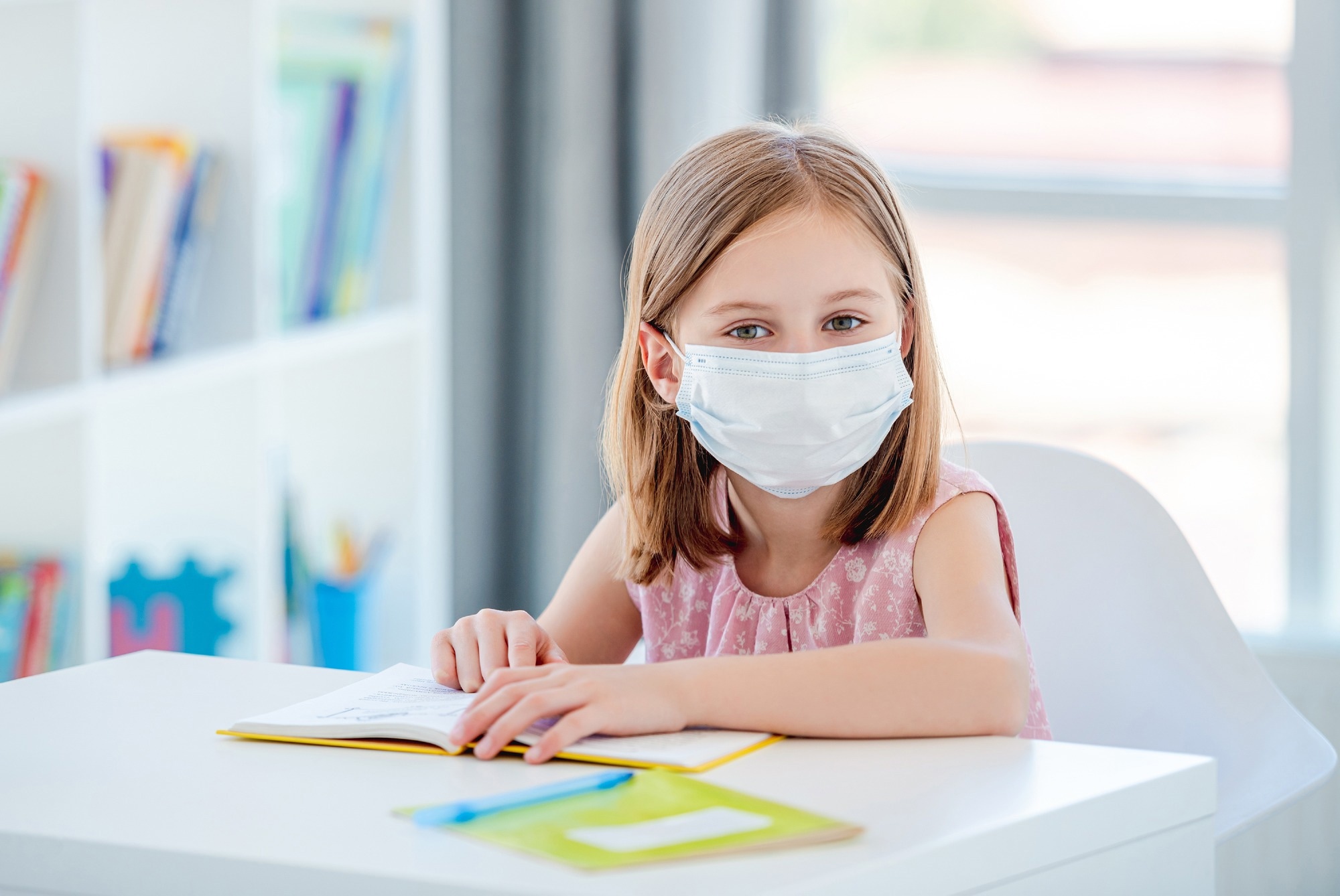It is essential to understand the specific interactions that enhance disease transmission, as this information could improve the design of effective interventions against the disease and prevent its transmission.
 Study: Empirical evidence of transmission over a school-household network for SARS-CoV-2; exploration of transmission pairs stratified by primary and secondary school. Image Credit: Tatyana Vyc / Shutterstock.com
Study: Empirical evidence of transmission over a school-household network for SARS-CoV-2; exploration of transmission pairs stratified by primary and secondary school. Image Credit: Tatyana Vyc / Shutterstock.com
Background
Generally, vaccination programs or other healthcare interventions are organized by local authorities. Therefore, it is important to understand how children enhance disease transmission at the local level.
Contact surveys have revealed that primary school children have maximum contact time at school and home. Thus, scientists hypothesize that transmission of infectious diseases among children could be a bipartite network of schools and households as nodes.
One previous study conducted in England indicated the possibility of establishing a network to demonstrate the spatial spread of infection based on the location of schools and their catchment area.
About the study
To elucidate whether disease transmission among children follows the bipartite structure of schools and households, scientists used data on school-aged children and transmission of the severe acute respiratory syndrome coronavirus 2 (SARS-CoV-2), the virus responsible for the coronavirus disease 2019 (COVID-19), in the Netherlands.
Over 4,000 transmission pairs, which included infector and infectee, were identified in the national infectious disease notification registry of children between four and 17 years of age. For infectors, COVID-19 symptoms manifested between March 1, 2021, and March 28, 2021, whereas symptoms were detected in infectees between March 1, 2021, and April 4, 2021.
During the study period, primary schools provided full-time, in-class education, while secondary schools provided in-class education at least one day each week. Students were able to attend school only when they presented a negative COVID-19 test result or did not exhibit any symptoms. Children who encountered a COVID-19-positive individual were quarantined.
Secondary school students were asked to follow social distancing guidelines and wear facemasks during school hours. After-school childcare was not provided for children whose parents were not essential workers.
The current study selected cases based on the self-reported date of symptom onset. All transmission pairs were required to provide two laboratory-confirmed COVID-19 test reports with an epidemiological link that indicated direct transmission between an infector and infectee. Within the transmission pairs, the spatial distance between the addresses was estimated as the Euclidean distance.
Study findings
A total of 175,169 COVID-19-positive individuals were identified in the Netherlands, 25.2% of whom were infectors. These infectors were associated with 63,581 transmission pairs with infectee symptoms.
Considering the eligibility criteria, a total of 4,059 transmission pairs were identified. Scientists estimated 51.9% disease transmission between primary schoolers, 19.6% between primary and secondary schoolers, and 28.5% between secondary schoolers.
In most cases, adults were recognized as infectors, with an adult or child who was too young to attend primary school as the infectee. Of the 31,909 COVID-19-positive school-aged children, 42.8% attended secondary school.
A higher number of disease transmissions associated with children occurred in the same study year. However, 81.7% of primary-secondary transmissions manifested at home.
For primary school pairs, the average spatial distance between infections was 1.2 km. For primary-secondary and secondary school pairs, the average spatial distance between infections was 1.6 km and 4.1 km, respectively.
The distance between primary-primary and secondary-secondary school children indicated the catchment areas of primary and secondary schools, respectively.
The relative distribution of disease transmission was dependent upon in-class durations of primary and secondary school students. Siblings also played an important role in the transmission of infectious diseases, particularly with regard to their attending different schools.
Conclusions
The current study highlighted that disease transmission in children could be evaluated using a bipartite network of schools and households. The largest number of disease transmissions occurred between school-aged children at home or in school settings.
In most cases, the majority of transmission occurred within the same school year. These observed transmission patterns are significantly affected by interventions, such as continual testing and tracing, wearing face masks, social distancing, and quarantining of contacts.
Households were also found to play a crucial role in disease transmission between school years and between primary and secondary schools.
Journal reference:
- Van Iersel, L. J. C. S., Backer, J. A., van Gaalen, R. D., et al. (2023) Empirical evidence of transmission over a school-household network for SARS-CoV-2; exploration of transmission pairs stratified by primary and secondary school. Epidemics 43. doi:10.1016/j.epidem.2023.100675